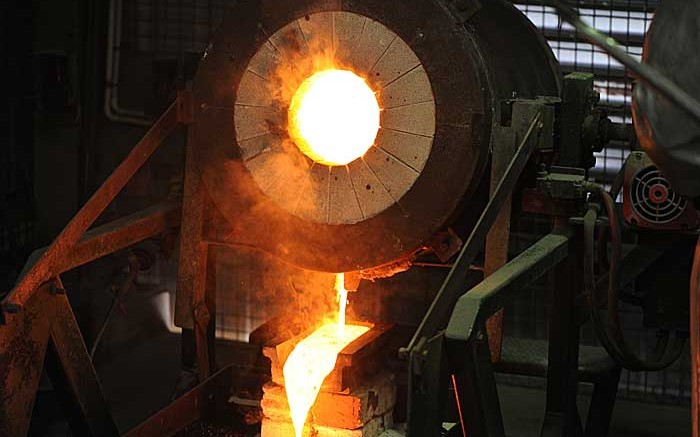VANCOUVER — The gold industry appears to be reacting to growing scrutiny over the century-old method that determines the daily spot price of gold. On June 18 the World Gold Council — a market-development organization composed of top gold miners — announced that it was convening a cross-industry group to discuss the “modernization of the London Gold Fix.”
Modern gold fixing began in late 1919, and determines the price for settling contracts between members of the London bullion market, which indirectly influences the recognized rate used as a benchmark for pricing most gold products and derivatives globally.
The price-setting ritual occurs twice a day by phone between Societe Generale, Bank of Nova Scotia, HSBC and Barclays. Germany’s Deutsche Bank vacated its seat without a replacement in May as part of its exit from commodities.
Gold fixing takes place every business day at 10:30 a.m. and 3 p.m. in London, with the participants serving as representatives of themselves and clients. The price is adjusted until the gold offered by either side is within 50 bars — or roughly 21,900 oz. — at which point the fix is settled. Traders relay information to clients and accept pertinent orders during the process.
Revelations surrounding the London interbank offered rate (Libor) scandal last year, which revealed rate manipulations, have resulted in renewed regulatory attention on financial markets. Word leaked in late 2013 that both the U.K. Financial Conduct Authority (FCA) and U.S. Commodity Futures Trading Commission were taking a closer look at how gold prices are set.
In late May the FCA fined Barclays US$44 million for breaching fairness principles in the gold-fixing process, namely its failure to “manage certain conflicts of interest between itself and its customers, and to take reasonable care to organize and control its affairs responsibly and effectively, with adequate risk-management systems.”
Natalie Dempster, managing director of central banks and public policy at the World Gold Council, said that “it is not surprising [the Fix] needs to change to meet today’s market expectations and enhanced regulations, transparency and technology . . . our objective in convening this forum is to ensure that the full range of analysis and market perspectives from all parts of the gold-supply chain are debated, understood and brought to bear on any potential changes.”
The World Gold Council consulted with a “number of industry participants” in order to identify five principles it believes should govern any reforms made to the gold-fix system.
The recommended criteria for the benchmark include: that it is based on executed trades, rather than quote submissions; is a tradable price, not simply a reference one; has highly transparent input data, published and subject to audit; is calculated from a deep and liquid market, through which a significant volume of gold flows are transacted; and represents a physically deliverable price, as many users want to take physical gold delivery.
The first meeting is scheduled for July 7 in London, with the FCA acting as an overseer. The participants will include representatives of bullion banks, refiners, exchange-traded funds and other gold-investment product sponsors, exchanges, industry bodies, central banks and mining companies.


Be the first to comment on "World Gold Council spearheads review of London gold fix"